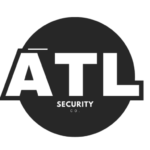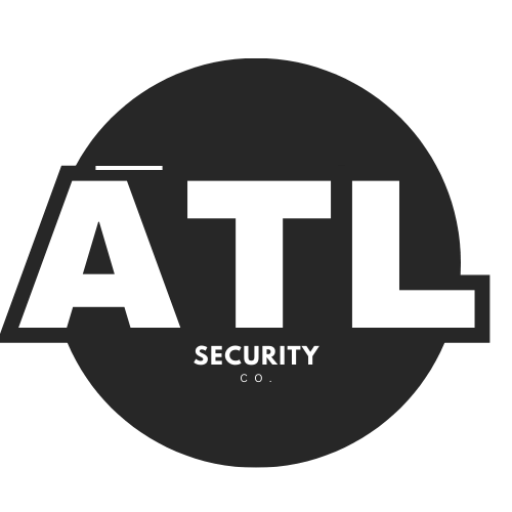In today’s world, data privacy is a hot topic. With technology growing fast, many companies are using tools to keep an eye on their employees. This is known as workplace surveillance.
It can include anything from monitoring emails to tracking computer usage.
While some argue that this helps improve productivity and security, others worry about how it affects personal privacy. Understanding the balance between keeping a workplace safe and respecting individual rights is crucial.
Workplace surveillance is not new, but it has become more common with the rise of digital tools. Many employees may not even realize how much they are being watched. Cameras in the office, software that tracks keystrokes, and even GPS on company vehicles are all forms of surveillance.
This raises important questions about what is acceptable and what crosses the line into invasion of privacy. As we dive deeper into this topic, we will explore the ethics, legal aspects, and the impact of surveillance on employees.
Key Takeaways
- Data privacy and workplace surveillance are important considerations in today’s digital workplace environment.
- Ethical considerations in workplace surveillance include the balance between employee privacy and the need for security and productivity.
- Legal considerations in workplace surveillance include compliance with local and international laws, as well as employee rights and consent.
- Workplace surveillance can have both positive and negative impacts on employee morale and productivity.
- Employers should strive to balance data privacy and security in the workplace by implementing best practices and considering the ethical and legal implications.
The Ethics of Workplace Surveillance
When it comes to workplace surveillance, ethics play a big role. Employers often argue that monitoring employees is necessary for security and efficiency. They believe it helps prevent theft, ensures safety, and boosts productivity.
However, this raises ethical questions about trust and respect. If employees feel they are constantly being watched, it can create a culture of fear rather than one of collaboration. On the other hand, employees have a right to privacy.
They should feel comfortable in their work environment without the fear of being monitored at every turn. Ethical workplace practices should focus on transparency. Employers should clearly communicate what is being monitored and why.
This way, employees can understand the purpose behind the surveillance and feel more secure in their roles.
Legal Considerations in Workplace Surveillance

Legal considerations are another important aspect of workplace surveillance. Laws vary by country and even by state, so it’s essential for employers to know what is allowed in their area. In many places, employers can legally monitor work emails and internet usage if they inform employees beforehand.
However, there are limits to what can be monitored without consent. For example, recording conversations without consent is illegal in many jurisdictions. Employers must also be careful about how they store and use the data they collect.
Misusing this information can lead to legal trouble and damage a company’s reputation. It’s crucial for businesses to stay informed about the laws surrounding workplace surveillance to avoid potential lawsuits or penalties.
Impact of Workplace Surveillance on Employee Morale and Productivity
Workplace surveillance can have a significant impact on employee morale and productivity. While some employees may feel motivated by knowing they are being monitored, others may feel stressed or anxious. Constant surveillance can lead to a lack of trust between employees and management.
When workers feel they are not trusted, it can lower their morale and make them less engaged in their work. On the flip side, some studies suggest that reasonable monitoring can actually boost productivity. When employees know that their work is being observed, they may be more likely to stay focused and complete tasks efficiently.
The key is finding a balance that encourages productivity without invading personal space or creating a hostile work environment.
Balancing Data Privacy and Security in the Workplace
Finding the right balance between data privacy and security is essential for any workplace. Employers need to protect their business from threats while also respecting their employees’ privacy rights. This can be tricky, as too much surveillance can lead to distrust, while too little can leave a company vulnerable.
One way to achieve this balance is by implementing clear policies regarding surveillance practices. Employers should outline what data will be collected, how it will be used, and who will have access to it. By being transparent about these practices, companies can help build trust with their employees while still maintaining security measures.
Best Practices for Employers in Implementing Workplace Surveillance

Employers should follow best practices when implementing workplace surveillance to ensure fairness and transparency. First, they should create a clear policy that outlines the purpose of surveillance and what will be monitored. This policy should be shared with all employees so everyone understands what to expect.
Second, employers should consider using less invasive methods of monitoring whenever possible.
For example, instead of tracking every keystroke, they might focus on overall productivity metrics or project completion rates. This approach can help maintain employee trust while still achieving security goals.
Lastly, employers should regularly review their surveillance practices to ensure they remain relevant and respectful of employee privacy. As technology changes, so do the ways in which companies can monitor their staff. Keeping policies up-to-date will help ensure that they align with both legal requirements and ethical standards.
Employee Rights and Consent in Workplace Surveillance
Employee rights are a crucial part of the conversation around workplace surveillance. Workers have the right to know if they are being monitored and what data is being collected about them. Consent is also an important factor; many laws require that employees give permission before any monitoring takes place.
Employers should make it easy for employees to understand their rights regarding surveillance. This includes providing information about what types of monitoring are in place and how the data will be used. By fostering an open dialogue about these issues, employers can help create a more trusting work environment.
Additionally, employees should feel empowered to voice their concerns about surveillance practices. If they believe that monitoring is excessive or invasive, they should have a way to address these issues with management. Open communication can help bridge the gap between employee rights and employer needs.
Future Trends in Data Privacy and Workplace Surveillance
As technology continues to evolve, so will workplace surveillance practices. One trend we may see is the increased use of artificial intelligence (AI) in monitoring systems. AI can analyze large amounts of data quickly, helping employers identify patterns in employee behavior without constant human oversight.
Another trend could be a greater emphasis on employee well-being in relation to surveillance practices. Companies may start to recognize that overly invasive monitoring can harm morale and productivity. As a result, they might adopt more balanced approaches that prioritize both security and employee comfort.
Finally, as public awareness of data privacy grows, we may see more regulations surrounding workplace surveillance. Employees are becoming more informed about their rights, which could lead to stricter laws governing how companies monitor their staff. Employers will need to stay ahead of these changes to ensure compliance while maintaining effective security measures.
In conclusion, workplace surveillance is a complex issue that requires careful consideration of ethics, legality, and employee rights. By finding a balance between data privacy and security, employers can create a positive work environment that respects individual rights while still protecting their business interests. As we move forward, it’s essential for both employers and employees to engage in open conversations about these practices to foster trust and understanding in the workplace.
FAQs
What is data privacy?
Data privacy refers to the protection of personal information and the right of individuals to have control over how their data is collected, used, and shared.
What is workplace surveillance?
Workplace surveillance involves the monitoring of employees’ activities, behaviors, and communications while they are at work. This can include video surveillance, computer monitoring, and tracking of internet usage and emails.
What are the potential benefits of workplace surveillance?
Workplace surveillance can help employers ensure the security of their premises, prevent theft, monitor productivity, and enforce company policies.
What are the potential risks to data privacy posed by workplace surveillance?
Workplace surveillance can lead to the collection of sensitive personal data, invasion of privacy, and potential misuse of the collected information.
Where is the line between data privacy and workplace surveillance?
The line between data privacy and workplace surveillance is often determined by legal regulations, company policies, and the need to balance employee privacy rights with legitimate business interests.
What are some best practices for balancing data privacy and workplace surveillance?
Best practices for balancing data privacy and workplace surveillance include being transparent with employees about surveillance practices, obtaining consent when necessary, minimizing data collection, and implementing strong data security measures.





